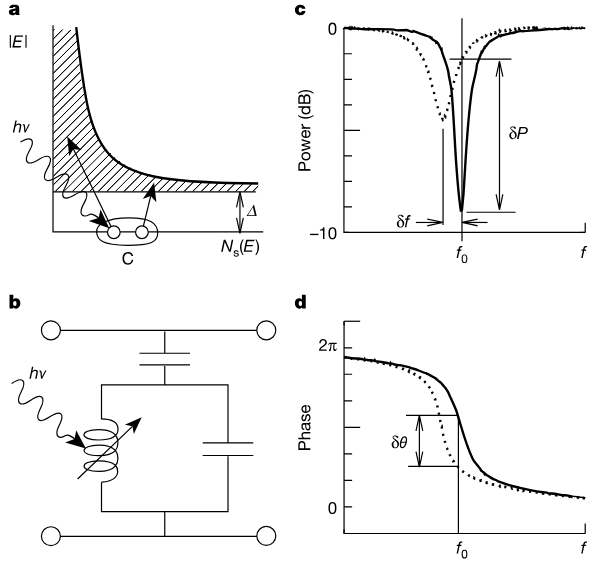MKIDs are a class of cryogenic superconducting detectors that operate on the principle of kinetic inductance in superconductors. In a superconductor at very low temperatures, most electrons form Cooper pairs that move without resistance. These pairs carry current with essentially no energy loss, but because they have mass, their motion contributes an additional inertia-like term to the inductance of the material whic is akin to an inductive term, therefore we call this contribution kinetic inductance.
When a photon with sufficient energy is absorbed by the superconductor, it breaks a Cooper pair into two quasiparticles. This increase in quasiparticles reduces the number of pairs available to carry current. As a result, the kinetic inductance of the device increases slightly.
Each MKID is patterned into a high-quality-factor microwave resonator — essentially a superconducting circuit that resonates at a very precise frequency in the GHz range. The resonance frequency is defined as a function of the inductance (L) and the capacitance (C) of the circuit \(f_0 = \frac{1}{\sqrt{LC}} \) . Thus, when a photon arrives and changes the kinetic inductance, the resonant frequency shifts downward. The readout of such detectors is carried out by probing the resonator continuously with a microwave tone, we can measure these tiny frequency shifts. The magnitude of the shift encodes the photon’s energy, while the timing of the shift reveals when the photon arrived.
